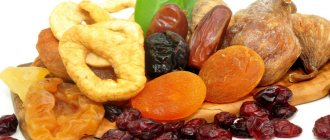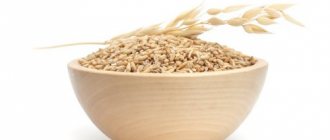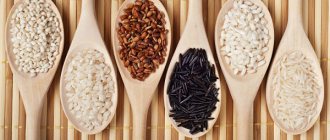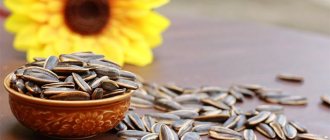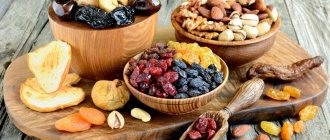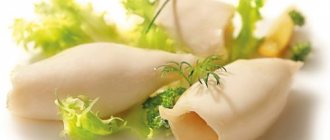What effect can vegetables and fruits have on the disease?
Most fruits and vegetables have a low or medium glycemic index, so they do not cause a spike in blood glucose levels compared to other carbohydrate-containing foods, such as white or whole grain bread and sweets.
Vegetables play an important role in diabetes because they provide the body with essential vitamins and minerals, and the fiber they contain slows down the absorption of glucose. Vitamins A, D, E, K are fat-soluble, so you should add olive oil, nuts or seeds to your greens 1.
Research has shown that certain types of fruit are beneficial for the primary prevention of many chronic diseases, including type 2 diabetes. Eating three servings of blueberries, apples or grapes per week significantly reduced the risk of developing type 2 diabetes.
Storage conditions
Dried apricots should be stored in a glass jar, paper bag, wooden box or fabric bag.
The fruits should not be exposed to moisture or direct sunlight. If you have a plastic container or freezer bag, you can place the dried fruit in the refrigerator or freezer compartment. The shelf life of dried apricots depends on the type of storage:
- in a room or kitchen - no more than a month;
- in a pantry, cellar and other dry, cool place - up to six months;
- in a refrigerator with a No Frost system - up to 10 months;
- in the freezer - 1-1.5 years.
It is not recommended to refreeze the product, so it is stored in small portions.
What fruits are good for different types of diabetes?
Increasing fruit consumption is recommended for primary prevention of many chronic diseases, including type 2 diabetes 3. For diabetes, it is recommended to consume any fruit, but with some restrictions.
Fruits differ from each other in glycemic index (GI):
- melon, bananas, grapes, raisins have high GI (60-70);
- medium (47-59) – prunes, blueberries, grapefruit;
- low GI (34-46) in apples, pears, oranges, peaches, plums, apricots, strawberries.
The most useful are gooseberries, pineapples, watermelons, avocados, lingonberries, peaches, lemons, black berries (especially blueberries), cherries, grapefruits, pears, apples, blackberries, raspberries, tangerines, melon, apricots, papaya, oranges, currants (white and red), wild strawberry, strawberry, cherry, cranberry.
Some of the recommended fruits may vary greatly in composition depending on the variety and growing conditions. Therefore, it is worth checking after each meal whether the fruit has caused an increase in blood sugar levels. To do this, every person living with diabetes must keep a diary and meticulously record all the foods and dishes of their diet in it 3.
Usefulness of SF
Maintaining a balanced nutritional diet is one of the keys to successful treatment of many diseases. Fruits are an essential part of a healthy diet. Since they cannot be stored for long in their raw form, they are usually dried.
The list of the most common dried fruits consists of:
- raisins;
- apricots and dried apricots;
- prunes;
- apples;
- pears;
- dates;
- bananas;
- watermelon;
- pineapple;
- viburnum.
Some time ago, doctors argued whether it is possible to eat dried fruits with diabetes. But many supported the idea that it would not harm a person with diabetes.
Undeniable advantages of SF:
- They are characterized by an original taste. Many are characterized by a sweet taste, but some still have a slight sourness;
- enriched with various substances necessary for humans.
Starting from a fruit that has been dried, each dried fruit has undeniable advantages:
- Banana is a source of choline, vitamin B, beta carotene, fluoride, potassium and calcium.
- Date charges the whole body with energy and stabilizes metabolic processes.
- Dried apricots will eliminate potassium deficiency in the body. The correct functioning of the cardiovascular system depends on potassium.
- Prunes have a positive effect on the functionality of the digestive tract.
Based on this, it can be argued that SF must be present in the diet of a person suffering from type 2 diabetes. But, like any product, it should be eaten only as prescribed by a doctor and in certain portions.
Important! Certain SF are very high in calories, so they can harm the health of a diabetic who is overweight.
Dried fruits
- Joint pain in diabetes
Not recommended fruits
Dietary recommendations do not prohibit the consumption of fruits, even if their glycemic index is relatively high 4. For people with type 1 diabetes, you need to be able to recalculate the carbohydrate load of fruits in bread units in order to compensate for their intake with increasing insulin doses.
People with type 2 diabetes should avoid eating large quantities (more than 400 g per day) of fruits with a high glycemic index (bananas, melon, very ripe pears and plums), as well as candied fruits and candied fruits, which contain a lot of sugar and have a high calorie content. It is also not recommended to consume a lot of jams, preserves, sweetened syrups, canned fruits in sweet marinade, jam, marmalade and fruit juices, especially with added sugar 1, 4.
Step-by-step recipes
Dietary dried fruits can be added as a natural sweetener to puddings, cookies, muesli and other dishes. Along with dried apricots, prunes, dried cranberries and apples are used in recipes.
Fruit muesli
Ingredients:
- oat or multigrain flakes - 100 g;
- sunflower seeds, nuts (almonds, cashews) - 20 g each;
- dried apricots - 20-30 g;
- dried cranberries - 15-20 g;
- edible coconut oil - 2 tbsp.
Fruit muesli served with milk.
How to make muesli:
- Melt coconut oil in a water bath and mix with cereal.
- Grind dried fruits, nuts and seeds to buttery crumbs, add to oatmeal.
- Spread the mixture onto parchment paper in a thin layer.
- Bake at +150°C for 20 minutes, stirring every 5 minutes.
The indicated amount of ingredients is designed for 3 servings of muesli. They should be served with milk or natural yogurt.
Curd zrazy
Ingredients:
- low-fat cottage cheese (2-5%) - 400 g;
- semolina and flour - 3-4 tbsp each;
- egg;
- fructose - 2-3 tbsp;
- dried apricots - 50-60 g;
- a pinch of salt, spices (vanillin, cinnamon) to taste;
- oil - for frying.
Dried apricots are added to curd zrazy.
How to cook:
- Pour a small amount of boiling water over the prepared dried apricots and leave for 10 minutes.
- Mix the remaining ingredients, leave the dough to stand so that the semolina absorbs the released whey.
- Cut dried apricots into small slices.
- Form a small cake of dough in the palm of your hand, put some chopped dried fruits inside and seal it like a pie. Repeat with all the zrazy, fry them on both sides over medium heat.
- Place the finished zrazy on a baking sheet lined with oiled paper. Bake for 8-10 minutes at a temperature of +170...+180°C.
What vegetables are allowed to eat if you have diabetes?
Many recommendations for creating a diet for people with type 1 and 2 diabetes mellitus advise unlimitedly increasing the proportion of vegetables in the diet, such as avocados, Brussels sprouts, cauliflower, zucchini, broccoli, zucchini, onions, chicory, green beans, mushrooms, sauerkraut, cucumbers. , olives, celery, eggplant, greens (spinach, dill, parsley, cilantro, green onions), peppers, radishes 1.
It is better to cook vegetables by steaming, stewing, baking in parchment or foil, or grilling without adding oil. It is better if the finished dish is slightly undercooked than overcooked. Al dente vegetables keep you full longer, and their carbohydrates are absorbed more slowly.
When is it better to give up?
Sometimes it is better to avoid dried fruits altogether. For example, dried apricots should not be eaten if:
- digestive disorders,
- allergic reactions,
- hypertension,
- and bronchial asthma.
Prunes and dried apricots are not recommended to be included in the diet of a diabetic who is obese.
It is better not to include prunes in the menu if, in addition to diabetes, you have:
- kidney stone disease,
- individual intolerance, accompanied by allergic reactions.
- gout, since prunes have minor diuretic properties,
- hypertension.
How to choose a healthy juice for diabetes?
Recent studies have shown that fruit juice consumption is associated with an increased risk of type 2 diabetes. Replacing three servings of fruit juice per week with the same amount of fruit reduced the risk of developing diabetes by 7% 3.
Remember: it is better to eat whole fruits than to drink sugar-free juice! Juice causes a faster increase in blood glucose, and 1 liter of juice contains about 500 Kcal.
When choosing juices, you need to look at unsweetened vegetable juices: tomato, a mixture of spinach, celery, beets, cabbage and cucumber, freshly squeezed citrus juices without adding syrups. A table of glycemic indexes for each type can serve as a guide.
It is not always possible to find suitable juices on sale. Better consider purchasing a juicer to create fresh juices with an individual recipe.
Composition and calorie content of dried apricots
Dried apricots are filled with vitamins, microelements and other substances beneficial for diabetics:
- iron involved in the process of hematopoiesis;
- potassium, which normalizes heart rate;
- magnesium, which improves brain function;
- calcium, which strengthens the skeleton, nails and tooth enamel;
- cobalt, involved in the synthesis of amino acids;
- organic acids involved in metabolic processes;
- vitamins that provide biochemical reactions;
- fiber that cleanses the intestines;
- carbohydrates that provide energy to the body.
Fresh apricots are unlikely to make you feel better. Their calorie content is only 45 kcal. But due to processing technology, when dried, their fruits become very high in calories. Per 100 g of dried apricots there are 243 kcal, which is very high for type 1 and type 2 diabetes. After all, patients with this disease often suffer from obesity. Therefore, dried apricots can be eaten in small quantities, following the recommendations of doctors.
Is it possible to eat dried fruits if you have diabetes?
Dried fruits contain minerals, vitamins and antioxidants, as well as healthy fiber. The polyphenolic antioxidants present in them improve blood flow, help support the digestive system, reduce oxidative stress and reduce the risk of developing many diseases. They are low in fat, sodium or cholesterol and can serve as natural substitutes for refined sugar. However, during the cooking process, some dried fruits are coated with sugar and syrup before drying to make them sweeter.
Different dried fruits have different glycemic index. Low GI dried fruits are the best choice because they have little effect on blood sugar and are relatively healthy.
Dates (different varieties from 60 to 140), raisins (59), figs (61), banana (65), mango (55-60), pineapple (50) have high and medium GI. Low-glycemic fruits - prunes (40), dried apples (35), apricots (dried apricots) 35, dried dogwood (20), melon (35).
Criterias of choice
When choosing dried fruits, you need to pay attention to their color, shine and consistency.
Quality criteria for dried apricots:
- color - dark orange, dark brown, for the lightest varieties of apricots - pale yellow;
- peel - strongly wrinkled, without damage, dirt, dark spots, traces of mold and moisture;
- texture - dense, dried fruits do not stick together;
- gloss - matte (glossy skin of dried apricots indicates additional treatment with oil or chemicals).
The dried apricots should be dark orange in color.
It is best to buy dried fruits in special stores or markets where you can inspect the goods. Unopened packages may contain spoiled fruits.
To increase the attractiveness of dried apricots, they are treated with sugar syrup, oil and chemical dyes. You can recognize such a product by its bright orange or bright red color, as well as its intense shine.
To increase the marketable mass, unscrupulous sellers soak dried fruits and then dry the peels.
After this, the fruits look juicier and larger, but are less healthy and have a shorter shelf life.
If you need to buy a lot of dried apricots at once, it is recommended to take a test portion (up to 50 g) and immerse it in cold water for 5-10 minutes. The presence or absence of dye can be judged by the shade of the water.
